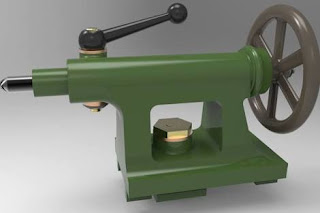INTRODUCTION:
Manufacture of a machine part by heating a metal or alloy above its melting point and pouring the liquidmetal/alloy in a cavity approximately of same shape and size as the machine part is called casting process. After the liquid metal cools and solidifies, it acquires the shape and size of the cavity and resembles the finished product required. The department of the workshop, where castings are made is called foundry.
The manufacture of a casting requires:
(a) Preparation of a pattern,
(b) Preparation of a mould with the help of the pattern,
(c) Melting of metal or alloy in a furnace,
(d) Pouring of molten metal into mould cavity,
(e) Breaking the mould to retrieve the casting,
(f) Cleaning the casting and cutting off risers, runners etc., (this operation is called ‘fettling’),
and
(g) Inspection of casting.
Castings are made in a large number of metals and alloys, both ferrrous and non-ferrous. Grey cast iron components are very common; steel castings are stronger and are used for components subject to higher stresses. Bronze and brass castings are used on ships and in marine environment, where ferrous items will be subjected to heavy corrosion. Aluminium and aluminium-magnesium castings are used in automobiles. Stainless steel castings are used for making cutlery items.
Casting is an economical way of producing components of required shape either in small lots or in larger lots. However, castings are less strong as compared to wrought components produced by processes such as forging etc. However castings offer the possibility of having slightly improved properties in certain part of the casting by techniques such as use of chill etc. In casting process, very little metal is wasted.
Casting Process



Comments
Post a Comment